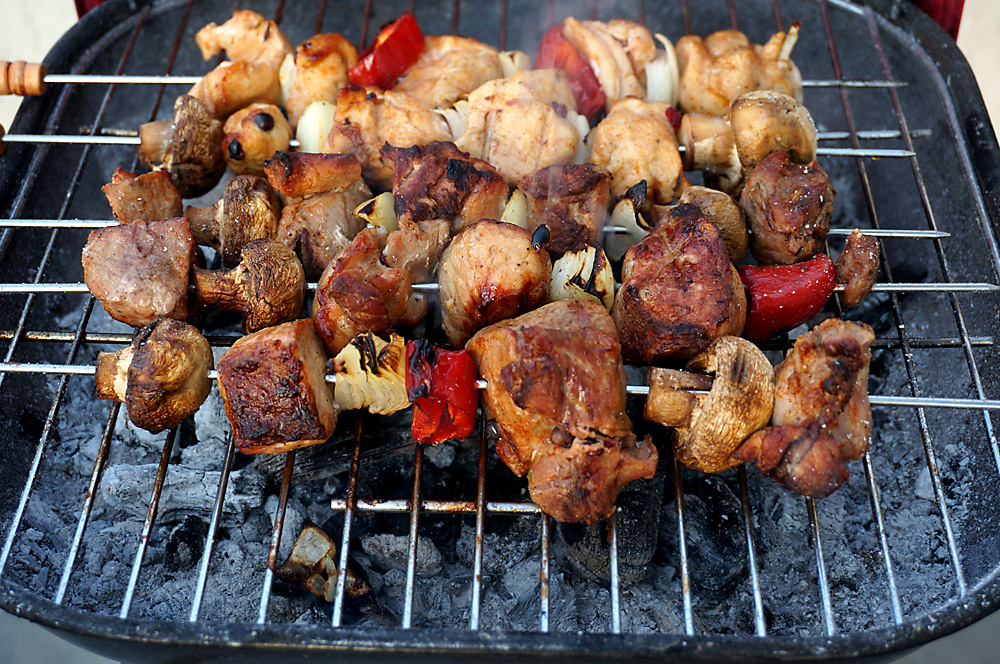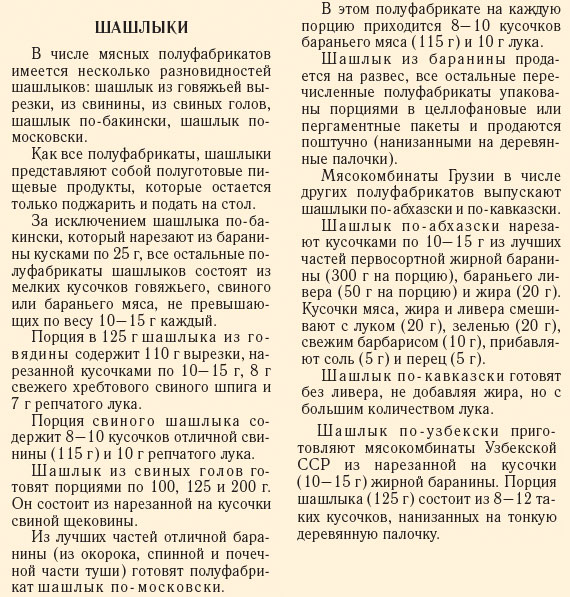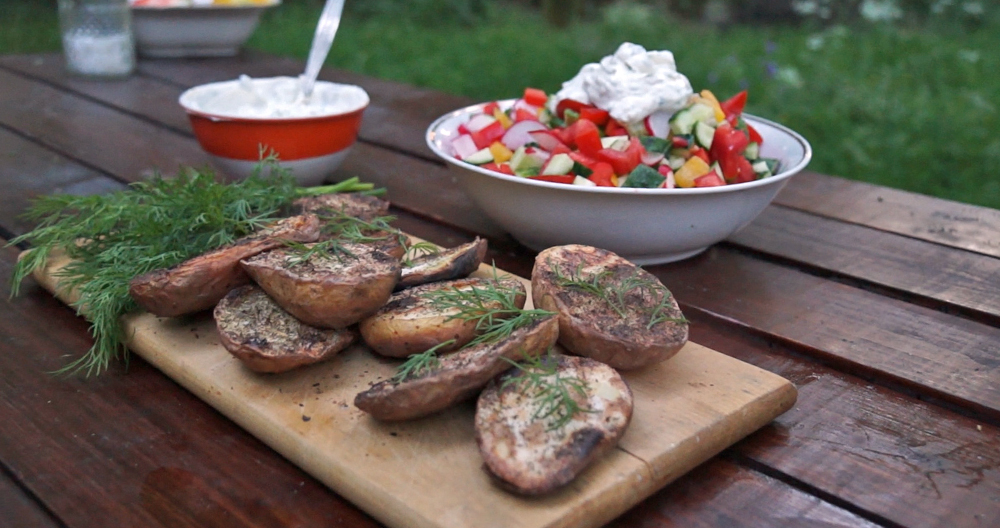Shashlik: The classic Soviet cookout meal

Hurry up until summer is not over to cook shashliki.
Anna KharzeevaThis piece is part of the Soviet Diet Cookbook, a blog about a modern Russian girl cooking Soviet food. To read more of the series, click here.
Societal changes and changes to cooking go and-in-hand: just as moving into separate apartments opened opportunities for home cooking and stimulated the rise of recipe-sharing, the advent of dachas and cars in the 1960s were the beginning of cooking out, which for Russians means “shashlik.” People began “covering the whole of Podmoskovye (areas in the Moscow region) with smoke,” as Granny put it.
Shashlik in its most basic form is pieces of meat grilled on a skewer over coals. The “classic” shashlik, Granny says, should be made with mutton. That’s how it’s often made in the Caucasus, where the dish originated, and where there’s lots of sheep. In Moscow, however, there is less mutton, and Russians became more creative with their shashlik. Here it’s made with chicken, pork and fish, the meat interspersed with pieces of onion, peppers or tomatoes. Everyone developed his own marinade (ketchup and garlic usually factor heavily). From the beginning, shashliking was a competitive sport.“Sunday tourists,” who would drive out into the countryside for an afternoon or camp out overnight would always bring dishes full of marinated pre-chopped meat to be put on skewers and cooked on a grill over an open fire. Given the popularity of the dish, cafes and restaurants with access to the space for an open fire would also try their best to prepare good shashlik.
At home, though, the lack of free flames didn’t stop people from making shashlik. They would just fry the meat on a frying pan, which I’m pretty sure would have to be called “fried meat” and not “shashlik,” but the word shashlik conjures up memories of summer, fresh air, sun, songs by the fire with friends -- all the things that are so rare in the Moscow climate that it’s worth trying to reproduce them in a frying pan.
Granny still tells the story of her visit to Azerbaijan some 50 years ago – there was a wild car trip on mountain roads, homemade wine picked up at 1am from a local babushka, juicy watermelon and of course shashlik by the seaside. Granny’s colleague had one made of sturgeon with tomatoes, and Granny herself, one with lamb. The setting of the beach, summer and an adventure were as important as the delicious flavor of the meat.
I was excited to try making my own shashlik via the Soviet recipe, which says to cook it over hot coals or “the usual way” – on a frying pan. Luckily I have an Australian husband and, therefore, a BBQ on the balcony and someone to make the fire for me. The marinating method of adding finely grated onion is one that Granny told me she heard a famous chef talk about recently. It’s a good basic one, and it works well. We made pork and chicken shashlik – cooking them over hot coals for 20-30 minutes with onions, pepper and mushrooms mixed in with the meat on the metal skewers – and it was absolutely delicious! The Book suggests serving shashlik with boiled rice and pomegranate sauce. I have no idea why anyone would serve boiled rice with shashlik – I certainly didn’t – but the pomegranate sauce was a nice addition.We had the shashlik while Granny was visiting us in Tbilisi, and she really enjoyed our shashlik dinner, too. I hope her second Caucasian shashlik experience was half as good as the first one!
Shashlik
 The recipe from the Soviet Cook Book, page 173-174
The recipe from the Soviet Cook Book, page 173-174
Ingridients:
- 500 g meat
- 2 onions
- 100g green onions
- 2 tomatoes
- u00bd lemon
- 1 Tbsp vinegar
- 1 Tbsp oil
Put the marinated meat on a metal skewer alternating the pieces of meat with sliced onion. Cook the skewers over burning hot coals approximately 15-20 minutes, turning the skewer so that the meat cooks evenly. If you do not have hot coals, it’s also possible to cook the meat in a frying pan.
When the shashlik is ready, remove the meat and vegetables from the skewers, sprinkle with oil and garnish with green onions and tomatoes cut into slices, and slices of lemon. You can also serve the shashlik with boiled rice and pomegranate sauce. You can also cook pork this way.
All rights reserved by Rossiyskaya Gazeta.
Subscribe
to our newsletter!
Get the week's best stories straight to your inbox


